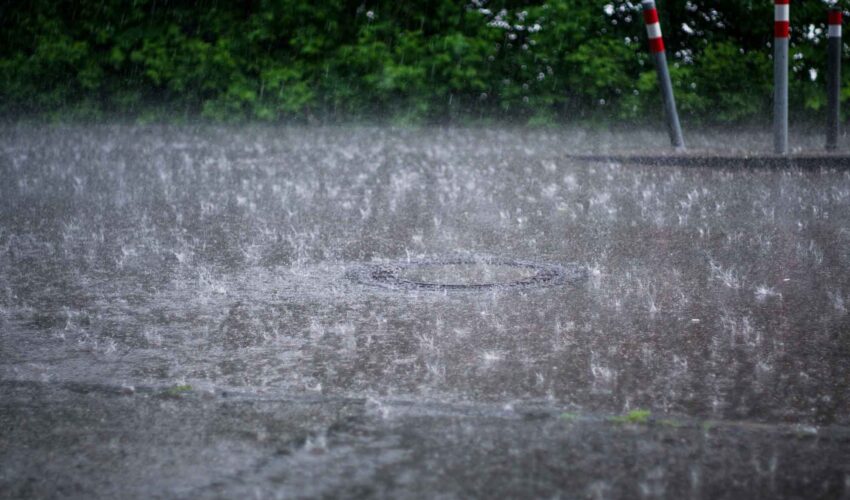Climate change can lead to increases in rainfall intensities and reductions in yearly rainfall due to various complex factors associated with changes in atmospheric conditions and weather patterns. Here’s how climate change can contribute to these phenomena:
Increased Intensity of Extreme Rainfall Events: Warmer temperatures associated with climate change lead to increased evaporation rates, resulting in more moisture in the atmosphere. This increased moisture content can fuel more intense rainfall events when precipitation does occur. Warmer air can also hold more water vapor, leading to heavier downpours during storms.
Changes in Weather Patterns: Climate change can alter atmospheric circulation patterns, such as the jet stream and weather fronts, which influence the distribution and intensity of rainfall. Shifts in these patterns can result in more frequent and intense rainfall in certain regions while causing drought conditions in others. For example, climate change can lead to more intense and prolonged periods of rainfall during some seasons, followed by longer dry spells.
Changes in Precipitation Patterns: Climate change can disrupt traditional precipitation patterns, leading to changes in the timing, duration, and intensity of rainfall events. This can result in more erratic rainfall patterns, with periods of heavy rainfall interspersed with longer dry periods. These changes can impact water availability, soil moisture levels, and agricultural productivity.
Changes in Atmospheric Circulation: Climate change can alter atmospheric circulation patterns, such as the Hadley Cell and the Walker Circulation, which govern global weather systems. These changes can influence the distribution of rainfall by shifting precipitation belts and changing the tracks of tropical cyclones and other weather systems. This can lead to changes in rainfall patterns on regional and global scales.
Feedback Mechanisms: Climate change can trigger feedback mechanisms that amplify the effects of warming and alter regional climate patterns. For example, melting ice caps and glaciers can disrupt ocean circulation patterns, leading to changes in regional climates and precipitation patterns. Similarly, changes in land use and vegetation cover can affect local weather patterns and rainfall distribution.
Increased Variability: Climate change can increase the variability of weather patterns, leading to more extreme and unpredictable rainfall events. This can result in fluctuations in rainfall intensity and distribution, with periods of heavy rainfall followed by extended dry spells. Increased variability in rainfall patterns can pose challenges for water management, agriculture, and ecosystem health.
Overall, while climate change can lead to increases in rainfall intensities and changes in precipitation patterns, the specific impacts can vary depending on regional climate dynamics, geographical factors, and local conditions. Understanding these complex interactions is essential for developing effective strategies to adapt to and mitigate the impacts of climate change on rainfall patterns and water resources.

